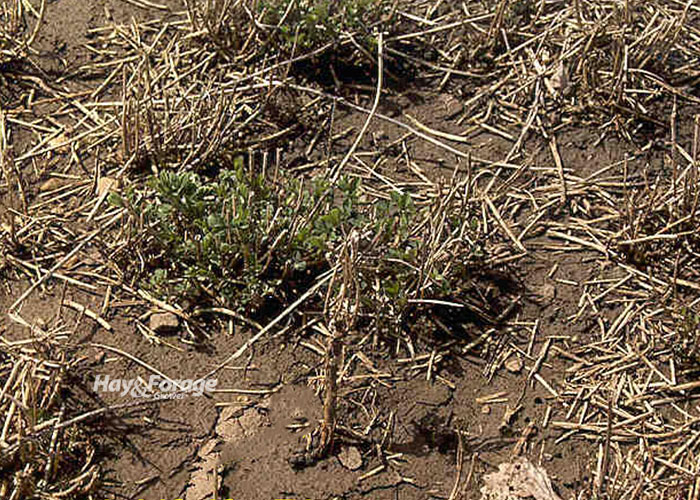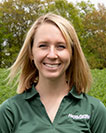
When temperatures fluctuate around the freezing point in the Midwest, the soil repeatedly expands and contracts. These freezing and thawing cycles can cause heaving in alfalfa stands, which may lead to root damage and weaken future forage growth.
In an article from the Midwest Forage Association’s Clippings newsletter, Dan Undersander, an emeritus professor and forage specialist with the University of Wisconsin-Madison, explains that heaving primarily occurs in heavy textured and high-moisture soils. Heaving is also more common in older alfalfa stands since these plants have large taproots.
Assess the damage
If heaving is prevalent in a field, Undersander recommends digging up a few plants to determine if the taproots have broken. The length of time alfalfa will survive in the spring depends on the length of the taproot above the breakage.
“If the taproot is broken 3 to 4 inches below the soil surface, alfalfa will only green up,” Undersander cautions. “If the taproot is broken 6 to 8 inches below the soil surface, there should be sufficient growth for a first crop. If the taproot is broken 8 to 12 inches below the soil surface, expect alfalfa growth until the first dry spell.”
Heaving height can also impact plant survival, and this is measured from the soil surface to the top of a plant’s crown. Undersander says alfalfa with over 1.5 inches of heaving will likely have root damage and plants will suffer subsequent damage from harvest equipment. It is best to terminate these stands immediately.
Alfalfa with 1 inch of heaving or less may have healthy taproots and will be productive the following year; however, these stands could take longer to green up when the weather gets warmer.
Do not try and push plants back into the soil with a roller or cultipacker. This can cause more root damage than heaving alone. Instead, wait and harvest alfalfa later than normal — when roughly 25% of plants in a field are in the bloom stage. Then, adjust the equipment to cut forage above the raised crowns.
Prevent heaving havoc
In salvaged alfalfa stands, most plants will naturally settle back in the soil throughout the growing season. This alfalfa should survive another winter. On the contrary, Undersander says alfalfa entering winter with elevated crowns will probably endure more winter injury and winterkill.
Heaving will always be worse in high-moisture soils, but there are ways to reduce its negative effects. For instance, leaving residue on the ground over winter insulates the soil and limits the number of freezing and thawing cycles that occur. Similarly, fields that are not harvested in the fall are less likely to experience heaving than those where forage is removed.
“Heaving in future years can also be minimized by having good internal and surface drainage,” Undersander states. “Tiling may reduce heaving problems, depending on the depth of the tile. Planting grass with alfalfa has been shown to reduce, but not eliminate, heaving,” he adds.

Amber Friedrichsen served as the 2021 and 2022 Hay & Forage Grower summer editorial intern. She currently attends Iowa State University where she is majoring in agricultural communications and agronomy.

